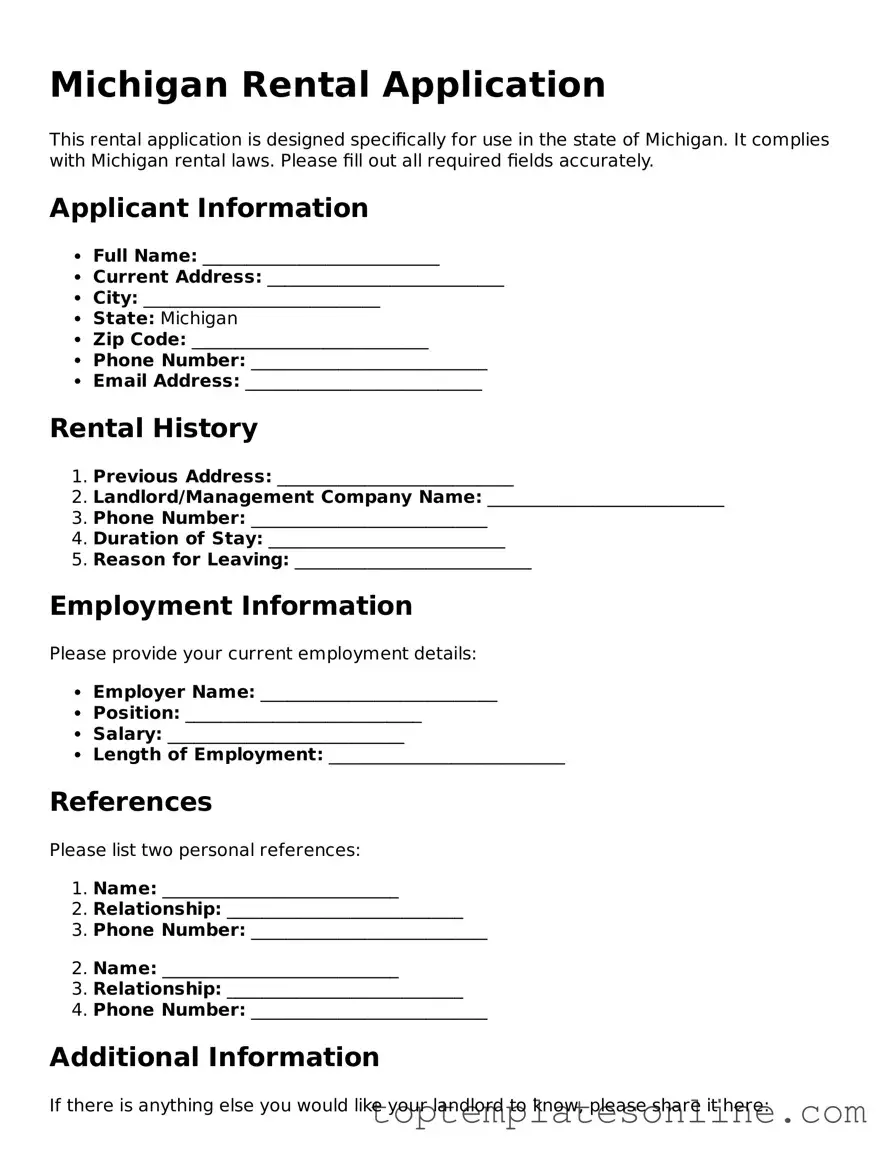When seeking a rental property in Michigan, understanding the rental application form is essential for both prospective tenants and landlords. This document serves as a critical first step in the leasing process, providing vital information that helps landlords assess potential tenants. Typically, the application requires personal details such as the applicant's name, contact information, and social security number, which are used to conduct background checks. Additionally, it often includes sections for employment history, income verification, and references, allowing landlords to gauge the financial stability and reliability of applicants. Some forms may also request consent for credit checks, which can reveal important insights into an applicant's financial behavior. By familiarizing yourself with the Michigan rental application form, you can navigate the leasing process more effectively, ensuring that all necessary information is accurately provided and increasing your chances of securing the desired rental property.
